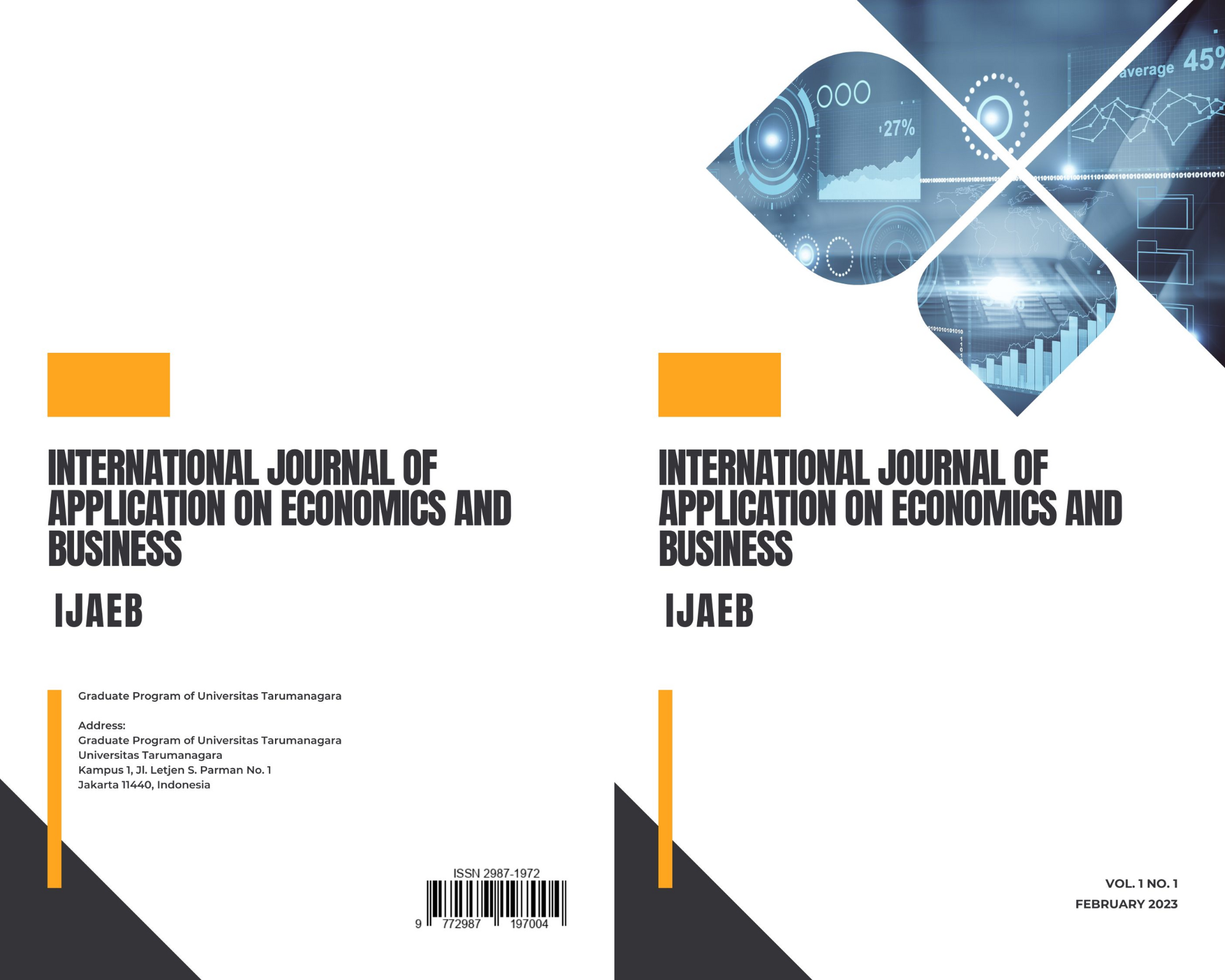The Influence of Risk Perception, Overconfidence, and Herding Behavior on Investment Decision
Main Article Content
Abstract
This research aims to determine the influence of risk perception, overconfidence, and herding behavior on investment decision. The population of this research is all stock investors who are domiciled in Riau. The sample was selected using purposive sampling method which amounts to 152 respondents. This research method uses Structural Equation Modeling (SEM) with Smart PLS software version 3.2.9. The purpose of this research is that investors can consider their decisions well before making an investment decision and find out how their psychological factors can affect their investment decision. The result of this research is that there is a positive influence of risk perception, overconfidence, and herding behavior on investment decision.
Article Details

This work is licensed under a Creative Commons Attribution-NonCommercial-ShareAlike 4.0 International License.
This journal provides immediate open access to its content on the principle that making research freely available to the public supports a greater global exchange of knowledge.
IJAEB by Graduate Program of Universitas Tarumanagara is licensed under a Creative Commons Attribution-NonCommercial-ShareAlike 4.0 International License.. Permissions beyond the scope of this license may be available at https://journal.untar.ac.id/index.php/ijaeb
References
Budiarto, Susanti, Pengaruh financial literacy, overconfidence, regret aversion bias, dan risk tolerance terhadap keputusan investasi (Studi pada investor PT. Sucorinvest Central Gani Galeri Investasi BEI Universitas Negeri Surabaya), J. Ilmu Manaj., vol. 5, no. 2, 2017, pp. 1–9.
R. E. H. Saputro, D. Lestari, Effect of financial literacy and risk perception on student investment decisions in Jakarta, Rev. Manag. Entrep., vol. 3, no. 2, 2019, pp. 107–132. doi: 10.37715/rme. v3i2.1237.
R. Robin, V. Angelina, Analysis of the impact of anchoring, herding bias, overconfidence and ethical consideration towards investment decision, JIMFE (Jurnal Ilm. Manaj. Fak. Ekon., vol. 6, no. 2, 2020, pp. 253–264. doi: 10.34203/jimfe.v6i2.2558.
A. O. Pratama, K. Purba, J. Jamhur, P. B. Tri Prasetyo, Pengaruh faktor perilaku investor saham terhadap keputusan investasi di Bursa Efek Indonesia, Monet. - J. Akunt. dan Keuang., vol. 7, no. 2, 2020, pp. 170–179. doi: 10.31294/moneter.v7i2.8659.
N. S. N. Ainia, L. Lutfi, The influence of risk perception, risk tolerance, overconfidence, and loss aversion towards investment decision making, J. Econ. Bus. Account. Ventur., vol. 21, no. 3, 2019, p. 401. doi: 10.14414/jebav.v21i3.1663.
I. O. Fridana, N. Asandimitra, Analisis faktor yang memengaruhi keputusan investasi (studi pada mahasiswi di Surabaya), J. Muara Ilmu Ekon. dan Bisnis, vol. 4, no. 2, 2020, p. 396. doi: 10.24912/jmieb.v4i2.8729.
D. A. Wulandari, R. Iramani, Studi experienced regret , risk tolerance , overconfidance, J. Bus. Bank., vol. 4, no. 1, 2014, pp. 55–66.
V. Novianggie, N. Asandimitra, The influence of behavioral bias, cognitive bias, and emotional bias on investment decision for college students with financial literacy as the moderating variable, Int. J. Acad. Res. Accounting, Financ. Manag. Sci., vol. 9, no. 2, 2019, pp. 92–107. doi: 10.6007/IJARAFMS/v9-i2/6044.
E. Pradikasari, Y. Isbanah, Pengaruh financial literacy, illussion of control dan risk perception terhadap keputusan investasi di Surabaya, J. Ilmu Manaj., vol. 6, no. Vol 6, No 4, 2018, pp. 424–434.
N. Yulianis, E. Sulistyowati, Impact of financial literacy and risk tolerance on investment decision, Int. J. Manag. Humanit., vol. 4, no. 1, 2021, pp. 61–71. doi: 10.35940/ijmh. k1059.0741120.
J. Novianto, R. Robin, Investor’s behavior and stock investment decision in Batam city,” Akuntabel, vol. 18, no. 3, 2021, pp. 532–542. [Online]. Available: https://journal.feb.unmul. ac.id/index.php/AKUNTABEL/article/view/10029.
I. G. Adiputra, T. H. Rahardjo, Hadrian, Analysis of investment decision making through overconfidence, herding effect, and self-monitoring variable during the covid-19 pandemic in Indonesia, Proc. Ninth Int. Conf. Entrep. Bus. Manag. (ICEBM 2020), vol. 174, 2021, pp. 184–190. doi: 10.2991/aebmr.k.210507.028.
M. Rahman, S. S. Gan, “Generation Y investment decision: an analysis using behavioural factors,” Manag. Financ., vol. 46, no. 8, 2020, pp. 1023–1041. doi: 10.1108/MF-10-2018-0534.
D. Adielyani, W. Mawardi, “The influence of overconfidence, herding behavior, and risk tolerance on stock investment decisions: the empirical study of millennial investors in Semarang City,” J. Maksipreneur Manajemen, Koperasi, dan Entrep., vol. 10, no. 1, 2020, p. 89. doi: 10.30588/jmp.v10i1.691.
E. Pranyoto, Susanti, Septiyani, “Herding behavior, experienced regret dan keputusan investasi pada bitcoin,” J. Bisnis Darmajaya, vol. 6, no. 1, 2020, pp. 29–43.
K. Sindhu, R. Kumar, “Influence of risk perception of investors on investment decisions: an empirical analysis,” Int. J. Res. Econ. Soc. Sci., vol. 2, no. 5, 2014, pp. 15–25. [Online]. Available: www.iosrjournals.org.
J. F. Hair, J. J. Risher, M. Sarstedt, C. M. Ringle, “When to use and how to report the results of PLS-SEM,” Eur. Bus. Rev., vol. 31, no. 1, 2019, pp. 2–24. doi: 10.1108/EBR-11-2018-0203.
J. F. Hair, M. Sarstedt, L. Hopkins, and V. G. Kuppelwieser, “Partial least squares structural equation modeling (PLS-SEM): An emerging tool in business research,” Eur. Bus. Rev., vol. 26, no. 2, 2014, pp. 106–121. doi: 10.1108/EBR-10-2013-0128.
Kourtidis, D., Servic, Z., Chatzoglou, P., Investors’ trading activity: a behavioural perspective and empirical results. The Journal of Socio-Economics, 40(5), 2011, pp. 548-557.
KSEI, Statistik Pasar Modal Indonesia. Ksei.co.id. 2021, [Online], Available: https://www.ksei.co.id/files/Statistik_Publik-Juni_2021.pdf
Mumaraki, J. N., Nasieku, T. Effect of overconfidence on individual investment decision: evidence from the investment services sector in Kenya. the International Journal of Business & Management, 4(10), 2016, pp. 254-261.



